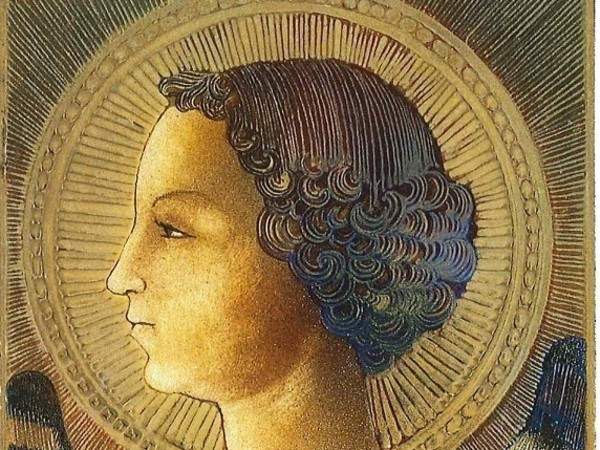Professor Ernesto Solari, a drawing teacher who describes himself as an “artist, researcher, and Leonardo scholar,” recently announced that he has discovered what he believes to be Leonardo da Vinci’s earliest work of art: a majolica decorated in lustre with the head of an angel, and bearing the date 1471. According to Solari, the work would have been made by a very young Leonardo at his grandfather’s kiln in Bacchereto, Tuscany: the teacher, we read in the statement he released online, “made use of an extensive and complex apparatus of diagnostic analysis including thermoluminescence examination that dated and authenticated the work to the 15th century, stratigraphic and xrf analysis of the pigments that certified its compatibility, and finally graphological expertise on the graphic tracings present on the work.” Details that Solari said would help confirm the attribution. The teacher also went so far as to claim that the work could even represent Leonardo’s first self-portrait.
However, the majolica, which, at least judging from the photos, does not look at all like a Leonardesque work, or even a Renaissance one (it would seem, if anything, to be an object from the late 19th or early 20th century, a time when the fashion for neo-Gothic and neo-Renaissance works, which in our country were produced in large quantities by special artisan workshops and then sold to residents and tourists, was widespread in Italy and Europe: for a brief discussion see our article on the Voglia d’Italia exhibition held earlier this year in Rome) has not been subjected to the counter-evidence (and in any case even a confirmation with technological examinations of the dating would not automatically attest to an assignment to Leonardo) and stylistic analyses carried out by third parties, as the practice of the scientific community would like to be done before making too rash announcements of bombastic discoveries. The style, moreover, again judging from the images disseminated on the web, appears far removed from Leonardo’s sensibility (taking for good the dating to 1471, it is necessary to consider that very shortly thereafter Leonardo would have collaborated with Verrocchio on the Baptism of Christ, preserved in the Uffizi, a work of infinitely superior quality) and, if it were a work of the time, it would be the achievement of a decidedly late author and certainly not of the genius of Vinci.
In the material circulated by Ernesto Solari, out of ten pages that include descriptions of the supposed history of the work and of the scientific analyses carried out, there are only a few lines that advance a stylistic analysis, moreover with elements that seem far too labile: “the three-quarter bust, the shaded effects of shadows and chiaroscuro in the angel’s complexions,” the “way of depicting the curls of the hair,” “some physiognomic aspects” (which are not indicated), the “realization of the profile with a single marked line and without indecision,” and the “left-handed stroke” are identified as Leonardoesque. However, the comparison between the angel’s hair and that of the angels in the Baptism of Christ, the way the background and halo are treated (which seem more typical of Neo-Renaissance ceramics than of those of the fifteenth century), the marked and uncertain outline do not seem to argue in favor of an attribution to Leonardo. Thus, no serious evidence seems to emerge that is capable of supporting, even remotely, an attribution to Leonardo da Vinci. Anyone who wants to see the work live can go to the Leonardo da Vinci Experience space in Rome, where the majolica is on display starting today.
Pictured: the work attributed to Leonardo.
 |
| Teacher announces: first work of Leonardo discovered. But evidence is very weak |
Warning: the translation into English of the original Italian article was created using automatic tools. We undertake to review all articles, but we do not guarantee the total absence of inaccuracies in the translation due to the program. You can find the original by clicking on the ITA button. If you find any mistake,please contact us.